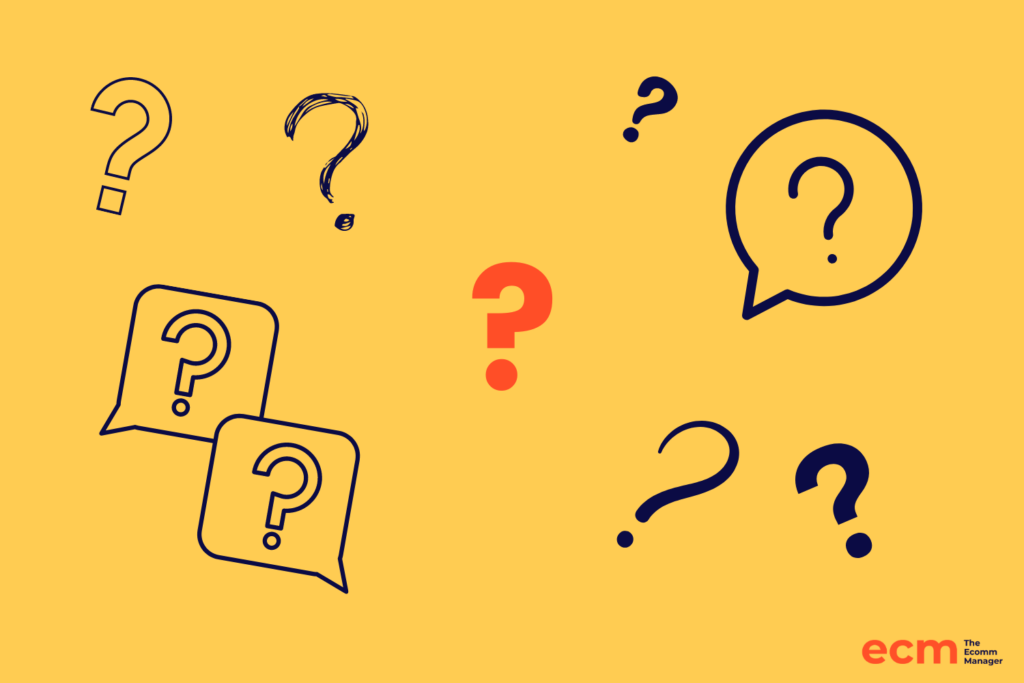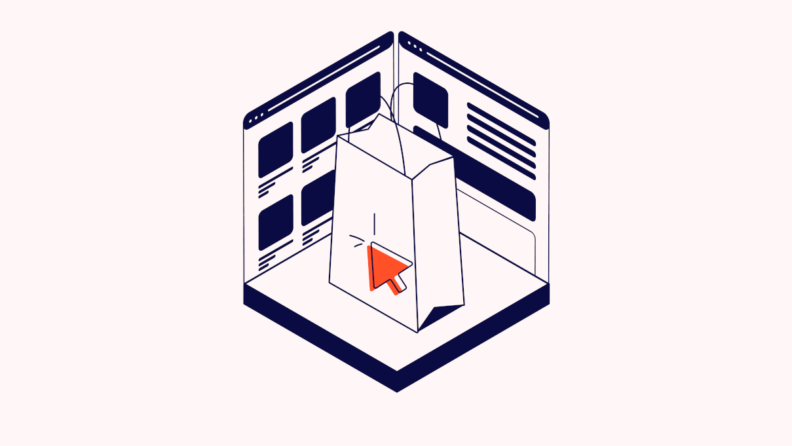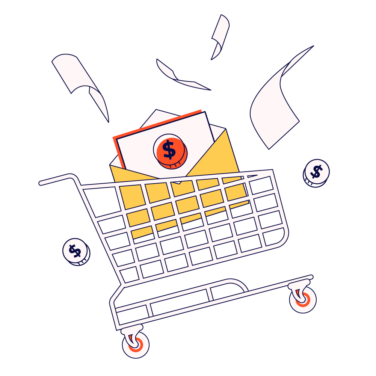Picking Your Platform Partner: Finding the best ecommerce solution involves selecting the right balance of features tailored to your brand's unique requirements.
Boom Goes the Ecommerce: The ecommerce sector has seen significant growth, prompting platforms to enhance shopping experiences, previously exclusive to big brands, now accessible to small businesses and solopreneurs.
Know Thyself...And Thy Customer: Understanding both your customers' shopping expectations and your own business needs is crucial for choosing an ecommerce platform that aligns with your goals.
A Feature Feast: Essential ecommerce platform features include user-friendly navigation, mobile responsiveness, fast loading, secure payment processing, and powerful SEO tools, among others.
Building Blocks of Success: Key aspects like a mobile-first design, robust marketing tools, seamless integrations, and strong security measures are fundamental in supporting ecommerce growth and success.
Choosing the ecommerce solution that’s best for your brand comes down to one thing—the right mix of ecommerce platform features for your unique needs.
As ecommerce has experienced its pandemic boom, ecommerce platforms have sprinted to provide unrivaled shopping experiences for the ever-increasing glut of online customers.
Not long ago, every platform required serious development work, leaving the truly fancy sites only within the reach of big brands with big budgets.
These days, SaaS platforms like Squarespace, Wix, and Shopify have enabled solopreneurs and SMBs to quickly build beautiful ecommerce websites without the help of developers.
In this post, I’m going to detail the top ecommerce platform features that merchants should look for in their hunt. But, first, I’m going to prime the pump with a bit of homework on your part (it’s not that hard, and it’ll be very helpful for you).
We’ll start with what your customers want before moving on to your own platform wishlist.
What Ecommerce Website Features Do Customers Expect?
The features you look for in an ecommerce platform very much mirror the things that your customers expect from you while they’re shopping.
Obviously, these expectations have changed over the years.
The internet has changed—it’s faster for many, finding things to buy is easier than ever, people have the internet in their pockets at all times, and they’re pickier than ever.
As Amazon changes the way people shop, expectations change.
So, online retailers are left to figure out how they can create Amazon-like features for their stores without having to actually be on Amazon.
Here are a few ecommerce website features your online store must include:
- User-friendly navigation
- Site search functionality
- Product reviews
- Mobile responsiveness
- Fast loading times
- High-quality product images and videos
- Detailed product descriptions
- Customer reviews and ratings
- Easy checkout process
- Multiple payment options
- Secure payment processing
- Personalized related product recommendations
- FAQs
- Clear shipping information
- Flexible return policies
- Live chat or chatbot support
- Wishlists
- Subscribe and save
- Loyalty programs
- Social media integration
- Advanced filtering and sorting
- Guest checkout
- Order tracking
- Clear contact information
These customer-facing features must be considered as you search for the best ecommerce platform. If your platform fails to provide the right shopping experience, what’s the point?
Now, you also need to understand your own particular needs...
What Do You Need From Your Ecommerce Platform?

Since each ecommerce business is a unique snowflake, it makes sense that what each brand needs from their platform will differ.
A big part of making big purchase decisions like this is looking inward to see what you need—not what everyone else says you need.
So, while you thought there wasn’t going to be homework, I’m going to have to ask you to take your pencils out.
Ask yourself some essential questions before we move on to the ecommerce platform features you should look out for:
- Who are your customers? You need to deeply understand your target audience. What are their demographics, device preferences, and payment habits? Tailoring your platform to how your customers shop and buy is key.
- What products are you selling? Are you offering digital downloads, physical goods, subscription services? Do you need product customization capabilities? Get clear on your product range.
- Where are you selling? Will you sell solely on your website or also integrate with major marketplaces like Amazon and eBay? Don't forget social selling too.
- How much traffic and sales volume can you expect? Realistically project your traffic and revenues so you can select a platform built to scale with your growth.
- What's your ecommerce budget? There are cost-effective solutions and premium platforms. Understand your financial constraints upfront.
- How much customization do you need? Some merchants require a platform they can heavily customize to their brand. Others are fine with a solid templated option.
- What are your SEO and marketing needs? SEO is critical for ecommerce. But you'll also likely want tools for email marketing, social media, SMS marketing, paid ads, and more.
- What user experience do you want to deliver? Mobile-friendly design, smooth checkout—think through your ideal user experience.
- How will you handle logistics? From inventory management to order fulfillment, logistics are key. Plan for any special shipping/delivery needs.
- What level of support is required? Does your business need 24/7 support or dedicated account management? Or is self-service okay?
- What tools need to integrate? CRM, ERP, accounting software—determine what systems must connect to your ecommerce platform.
- How critical is security? Understand your data security needs and any relevant compliance standards to ensure proper protection.
20 Must-Have Features to Look For in Your Ecommerce Platform
Building an ecommerce website is an exciting endeavor. It's a huge step forward for your business and can lead to great growth for your company.
So how do you determine what features you need? Start by determining which key ecommerce platform features are essential.
User-friendly admin
You’ll be in your dashboard every day, so it can’t be a cumbersome experience.
An intuitive, well-designed admin dashboard is where you'll spend a huge amount of time managing your products, processing orders, viewing analytics and so much more.
A clunky, outdated interface will just slow you down and frustrate your team.
You’ll want a clean, modern admin with a logical layout and easy navigation. The best platforms make even complex tasks feel simple through well-thought-out UX and UI.
It should be easy to find what you need in a few clicks, and common tasks (like duplicating products) shouldn’t be tiresome manual activities.
So when evaluating platforms, take a careful look at how the admin is organized and how it feels to navigate and complete daily workflows. This will make or break your productivity, so its user-friendliness is non-negotiable.
Robust content management
Quality product descriptions, gorgeous images, and detailed sizing guides help customers make informed purchases. That's why a robust content management system (CMS) is essential.
An integrated CMS lets you easily create, edit, and manage all your product and marketing content in one place.
Quickly create high-converting product pages and engage your audience with powerful blog posts to drive top-of-funnel traffic.
Look for a WYSIWYG editor that simplifies formatting and media addition, without needing to wrestle with code. Pre-built templates and modules are invaluable.
Creating custom content types for different product layouts and fields streamlines product setup.
Advanced metadata and taxonomy tools help organize your product catalog for optimized search and navigation, including custom filters, cross-linking, and automated tagging.
For a headless setup, ensure your CMS has powerful capabilities that can integrate across API bridges for super-fast frontend functionality.
Powerful design customization tools

Your brand is defined by your storefront's look and feel. Therefore, having powerful web design capabilities should be a top priority.
The most customizable ecommerce platforms offer comprehensive theme editors for designers and developers to tweak every aspect of the frontend experience. Platforms like Magento and WooCommerce excel in this area.
For less technical users, look for a robust theme store and an intuitive visual editor.
This allows your marketing team to easily modify fonts, colors, and background images without involving developers. Platforms like BigCommerce and Shopify offer this user-friendly interface.
Drag-and-drop page building tools, available through plugin or app stores on Shopify and BigCommerce, add even more customizability.
Smaller businesses might prefer solutions with clean, professionally-designed themes that can be lightly customized to reflect their brand. Squarespace and Wix are great for this.
Choose a platform based on your design needs and how you want to approach your store's look and feel.
Smart order and inventory management
When you start seeing those lovely sales start pouring in, you’ll want to keep everything nice and organized, no matter the volume.
That's why comprehensive order and inventory management capabilities are must-haves for any ecommerce platform.
On the order management front, you'll want a centralized hub with capabilities like:
- Viewing all incoming orders across sales channels
- Configuring custom order statuses for visibility into each stage
- Easily capturing customer details, shipping info, payment status, notes
- Filtering and searching orders
- Customizing order notification email templates
For inventory management, you’ll want smart automations and real-time syncing so that both you and your customers are seeing the right information. You’ll want to look for:
- Real-time inventory sync across online and offline stock
- Low-stock notifications and automatic product disablement
- Reorder point alerts based on demand forecasting
- Bundled inventory tracking for product kits
- Bulk inventory updates and import/export tools
- Stocktaking with barcode scanning and cycle counting
- Reporting on turn rates, holding costs, demand forecasting
With sophisticated order processing and inventory management, you can maintain operational efficiency and seamless customer experiences even as order volumes and complexity increase.
Mobile-first design
These days, most of your traffic and orders are happening on mobile phones, statistically speaking.
Thus, if your store was built for desktop, optimizing for mobile devices is too little, too late. You used to be able to get away with that, but no longer. The future is mobile-first.
Ecommerce platforms are catching on, but not all are doing enough.
The best solutions use responsive design to adapt layouts, navigation, and formatting for smartphones, tablets, and desktops. This ensures a seamless experience across devices.
As mobile purchasing rises, platforms that prioritize mobile design will help you capture this demand. A slow, hard-to-navigate mobile site that requires excessive pinching and scrolling will hurt conversions.
Personally, I'd just leave and never come back.
Look for mobile-optimized merchandising, marketing, and analytics tools. Features like mobile-specific product recommendations, targeted push notifications, and mobile audience data are key.
From homepage to checkout, the mobile experience must be frictionless.
Powerful SEO functionality
You may have heard of this thing called Google. It drives most of the website traffic online and it may very well have landed you on this post.
Search engine optimization (or SEO, if you’re into the whole brevity thing), is what lands your product pages and blog posts into the top spots on that giant of a search engine.
Google—and to a lesser extent, Bing—rank your pages based on many hidden factors. Key elements include site architecture, URL structure, and meta tags. Your platform should help with these.
At a minimum, look for a platform that auto-generates SEO-friendly URLs and allows custom page titles and meta descriptions.
Advanced platforms optimize technical SEO with features like XML sitemap generation, schema markup, canonical URL detection, and automatic redirection of legacy URLs.
Leading solutions integrate AI for automated SEO recommendations and content suggestions based on search trends and user behavior.
When evaluating platforms, check their capabilities for managing redirects, reviewing page load speed, creating SEO-friendly navigation, generating robot.txt files, and more.
Analytics and reporting

How can you measure how far you’ve come if you don’t have the numbers to quantify it? Analytics and reporting capabilities let you see how your work is paying off (or not).
At a basic level, you'll want access to metrics like website traffic, conversion rates, top products, revenue by channel, and more. But the most valuable platforms go beyond surface-level data.
You’ll want to look for advanced segmentation that lets you analyze performance by customer groups, geographical regions, devices, acquisition sources, and other criteria.
This level of granularity helps identify areas for improvement.
Real-time dashboards display your most mission-critical data and KPIs at a glance. The ability to customize these dashboards ensures you see the metrics that matter most.
For larger brands, integrations with enterprise-grade analytics platforms like Google Analytics 360 provide even deeper customer journey mapping and predictive modeling.
With great data-backed insights, you can continually optimize your store for better conversion rates and increased sales. Those are nice, right?
Strong security
You know what’s really fun for customers? Going to a store, buying a thing with their credit card, then dealing with fraud from having their details stolen.
Oh, wait, that’s actually the worst.
As a merchant, you are the trusted steward of their sensitive customer data and payment information. Your platform must have safeguards in place to mitigate the risks of damaging data breaches.
First, ensure the platform supports HTTPS across the entire site for encrypted data transmission. An SSL certificate management system that renews automatically is essential.
Taking PCI-compliant payments securely on your site is non-negotiable. Look for advanced techniques like tokenization to protect sensitive information, often depending on your payment gateways and processors.
Robust identity and access management controls let you grant and revoke permissions precisely, controlling who on your team accesses what data.
Two-factor authentication adds an extra layer of security by verifying user identities during login.
Top platforms offer automatic security scanning and vulnerability monitoring to protect against hacking attempts.
Cloud-based hosting with load balancing, firewalls, and DDoS mitigation ensures your site remains up and running during traffic spikes or attacks.
Site search and navigation

Navigating your online store should be effortless. At a minimum, your navigation menus should intuitively guide users to every part of your store.
From your homepage to the Men’s Shortsleeved Patterned Button-up Shirts product category, it should only take a few clicks. (I'd like some of these in fun patterns, please.)
Top and bottom nav links are standard, and your ecommerce platform should support them.
Next, site search—some tools are just bad. Exact match phrases aren’t enough and can hurt the online shopping experience.
You'll want a search bar solution that scans your entire product catalog and returns relevant results, not just basic titles and descriptions. Suggested searches and autocomplete are essential to avoid frustrating customers with simple typos.
The best platforms use natural language processing to understand search intent, so a search for "outdoor grill" also shows "patio bbq" and "backyard grilling."
Fortunately, site search functionality is improving, especially with AI transforming every industry.
Marketing tools
Even after you put in all the work of getting your store built, your work is far from done. Without great marketing strategies, your website will just sit there, forever waiting and tapping its fingers.
So, your platform should have some built-in marketing tools or awesome integrations to help you get your store in front of the right people.
While you want dedicated apps for certain marketing activities, look for the following built-in marketing functions:
- Email campaign builder for newsletters, promotions, abandoned carts
- Audience segmentation and personalization abilities
- On-site promotional tools like announcement bars and pop-ups
- Product recommendation engines for cross-sells/upsells
- SEO tools for optimizing site content and structure
- Basic affiliate marketing features like tracking links
For dedicated marketing capabilities, you’ll need to be able to add apps for:
- Leading email marketing providers (Mailchimp, Klaviyo, etc.)
- Social media marketing and content platforms
- Affiliate networks and advanced referral tracking
- Comprehensive SEO and content marketing suites
- SMS, mobile push notifications, user-generated content
The top ecommerce platforms give you a strong built-in marketing foundation covering the core essentials.
This is complemented by open integration capabilities and app marketplaces that allow layering on any specialized third-party marketing tools you need.
Easy integrations
Obviously, if you pick a platform that’s trying to do too much, it’ll do everything mediocre.
So, while it’s nice to have a lot of features out of the box for quick store set-up, you also want to go outside the platform for specific store functions (as we discussed with marketing tools).
You’ll want your platform to have a robust app store and great integration capabilities via APIs.
This allows you to connect with your entire tech stack and extend functionality across:
- ERPs
- CRMs
- Accounting software
- Inventory management software
- Order management systems
- Product information management (PIM)
Being able to create a seamless ecommerce data flow between these systems is key for efficiency.
The ability to build and integrate custom apps through APIs allows tailoring your platform to any niche requirements. Many top platforms cultivate entire developer communities around designing unique extensions.
You'll also want established partnerships with leading apps and providers for turnkey integration with solutions like:
- Payment gateways
- Shipping/fulfillment
- Tax compliance
- Live chat
With robust integration capabilities, your ecommerce platform remains future-proofed and agile as your online business needs evolve over time. You avoid the limitations of rigid, closed environments.
Shopping cart customization

The shopping cart and checkout page experience is one of the most critical components of any ecommerce site. Even minor usability hurdles here can lead to abandoned carts and lost sales.
That's why it's so important to choose an ecommerce platform that allows fully customizing the shopping cart functionality to create a seamless, on-brand experience tailored to your customers' needs.
Top platforms provide drag-and-drop visual builders that enable your team to design every aspect of the cart and checkout flow without coding—from layout and styling to distraction-removing features.
Having the ability to customize calls-to-action, trust badges, upsell/cross-sell displays, and more allows you to optimize for increasing average order values.
Look for one-page checkout capabilities that condense the entire purchasing journey into fewer steps and clicks for higher conversion rates.
The best solutions take things further by surfacing real-time shipping rates, displaying calculated taxes/duties, and dynamically presenting upsell recommendations during checkout using AI.
Multichannel capabilities
Merchants need to be able to sell wherever their customers are. Your storefront isn’t enough on its own.
That means having a true multichannel ecommerce presence across your website, marketplaces, social media and more.
Prioritize platforms with robust multichannel integration capabilities to streamline selling across multiple customer touchpoints seamlessly.
Key features to look for include:
- Out-of-the-box integration with major marketplaces like Amazon, eBay, Walmart
- Options to create shoppable social media posts to drive sales on channels like Instagram, Facebook, TikTok
- Easy listing syndication so you can publish products across sales channels from one centralized catalog
- Unified inventory pooling and order management across all channels
- Tailored product descriptions and marketing content by channel
- Consolidated reporting and analytics spanning your entire multichannel ecomm presence
The ability to meet customers where they are boosts brand discoverability and removes purchasing friction.
As ecommerce continues getting more complex and fragmented, having this multichannel mastering capability baked into your core platform is quickly becoming a necessity rather than luxury.
Product attributes and filtering

These ecommerce platform features become more important for brands that have large catalogs to enable a more intuitive shopping experience despite all the options.
First, you’ll want to be able to define custom product attributes that go further than name, description, and price. This could include things like size, color, material, brand, etc.
Filterable attributes allow customers to quickly narrow down products using criteria important to them. For example, filtering jewelry by metal type, gemstone, and price range. Or shirts by size, color, and material.
On a product page, displaying a matrix of purchasable product variants (e.g. a shirt in all available sizes/colors) provides a convenient roadmap for shoppers to find their desired version.
Intelligent product badging, like promotional callouts and stock status indicators, provides helpful shoppers signals and increases conversion potential.
With rich product details, adaptive filtering, and advanced navigation, customers can zero in on the perfect product quickly—preventing frustrated search struggles or incomplete purchases.
Wishlists
Santa doesn’t need to be the only one that knows what you want for Christmas (or your birthday or anniversary or Festivus). Many ecommerce stores can keep track of your wishlists, too.
You want to be one of those ecommerce stores. Wishlists play a powerful role in catering to shoppers' needs and driving valuable engagement and conversions over time.
Customers should be able to easily add products to a persistent wishlist from any page and view/manage their wishlists from a dedicated page or account area.
But the best ecommerce solutions take wishlists much further as an engagement tool.
Automated email campaigns can remind customers about items in their wishlist and notify them of price drops or new product arrivals related to their interests.
Shareable wishlists allow customers to collaborate with others, which is great for gifting use cases. Friends and family can view the list, see which items have been purchased, and coordinate seamlessly.
Many platforms integrate wishlist data into their product recommendation engines. This allows dynamically displaying wishlist-related products in strategic places like cart pages to encourage adding those coveted items.
Product reviews
You know what you think about your ecommerce brand. And, you know your mom thinks it’s just so wonderful.
But, the opinions that truly matter are those of your customers (sorry, mom). Product reviews suss this out, and give the world the unvarnished truth about your products.
Customer reviews are a critical factor influencing the purchasing decisions of other potential customers. Having a robust product reviews system integrated into your platform is essential.
You need the ability to collect reviews and ratings on a per-product basis, as well as aggregate scores for visibility. Make sure reviews can include rich media like photos and videos.
Collecting reviews is a major part of this, with top platforms automating post-purchase review request emails.
Reviews can also be gamified, with reward points for adding reviews and extra awarded for including images or videos. The result being that merchants have valuable and earnest feedback that acts as powerful UGC for marketing efforts.
Cart abandonment recovery

Cart abandonment is an inevitability. People are busy and they forget things.
But having smart abandonment recovery capabilities built into your platform can help win back and convert those potential lost sales.
This means your platform can capture cart abandonment data and follow up with customers with automated email campaigns. Advanced personalization features can make this even more effective.
Look for smart AI-powered features that dynamically adjust offers, messaging, and channels based on machine learning about what motivates each individual customer to convert.
While you may not need the more advanced functionality, cart abandonment recovery is a no-brainer. Get that money back with automated campaigns!
You can also find more advanced features in cart abandonment software, if you so wish.
24/7 customer support
This is an easy one. If you don’t get the support you need when things go sideways, the impact on your bottom line can be significant.
You’re ecommerce platform has a lot of moving pieces, so you need experts at the ready in case you need to fix something fast.
Look for 24/7 customer support via phone, email, and live chat. Beyond that, check out their forums to see how actively they engage with issues merchants like you are regularly encountering.
So, if you can’t find your answers in the community forums, you can move on to 1:1 support.
B2B functionality
This feature won’t be a requirement for many businesses, but it’s a must for any brand that is even considering expanding into wholesale.
B2B ecommerce differs from DTC ecommerce in very significant ways.
To sell to other businesses, you need to be able to offer variable custom pricing, online portals, reordering capabilities, and more. These are all possible through your ecommerce platform.
The best B2B ecommerce platforms include things like:
- Custom pricing and discounting
- Account management for buyers
- Reordering for frequently purchased products
- Bulk ordering capabilities
- Flexible payment methods and credit terms
- Customer segmentation and profiles
- PIM and ERP integration
Even if adding a side wholesale business, this functionality will be huge for your operational efficiency. Check out our favorite B2B ecommerce platforms here:
AI assistants

Everything is getting AI added to it these days. Ecommerce platforms are no exception.
From Wix’s AI website builder allowing brands to create a website in no time to Shopify’s Magic and Sidekick getting infused into product descriptions, product images, blog posts, live chat, and even the running of promos—AI is alive and well in ecommerce.
If this sounds like the sort of help you’d like, you’ll likely find some form of it wherever you look. You just need to know what you want AI to do for you.
How Do You Compare Ecommerce Platform Features?
The best way to compare platforms is to create a sort of matrix of key features. Ideally, before you get to this step, you’ve already filtered out certain platforms that don’t check your must-have boxes.
With a shortlist at the ready, you can build out a table listing out features in the first column and your potential features in the first row.
You’ll want to fill in your own matrix with a bit more detail, but it could look something like this:
| Feature | Shopify | BigCommerce | WooCommerce | Adobe Commerce |
| User-friendly admin interface | Yes | Yes | Moderate | Yes |
| Great content management | Yes | Yes | Yes | Yes |
| Design customizability | Moderate | Moderate | High | High |
| Inventory & order management | Yes | Yes | Yes | Yes |
| Mobile-first design | Yes | Yes | Yes | Yes |
| Powerful SEO functionality | Yes | Yes | High | High |
| Analytics and reporting | Yes | Yes | Moderate | Yes |
| Strong security | Yes | Yes | Moderate | Yes |
| Site search | Yes | Yes | Yes | Yes |
| Marketing tools | Yes | Yes | High | Yes |
| Easy integrations | Yes | Yes | High | Yes |
| Multichannel capabilities | Yes | Yes | Moderate | Yes |
| Shopping cart customization | Yes | Yes | High | Yes |
| Product attributes and filtering | Yes | Yes | High | Yes |
| Wishlists | Yes | Yes | Yes | Yes |
| Product reviews | Yes | Yes | Yes | Yes |
| Cart abandonment recovery | Yes | Yes | Yes | Yes |
| 24/7 customer support | Yes | Yes | Moderate | Yes |
| B2B functionality | No | Yes | No | Yes |
| AI assistants | Yes | Yes | Yes | Yes |
This process may reveal some standout leaders and even shrink your shortlist a bit.
If you are starting to get down to just a few platforms, you are in a perfect place to get free demos or start free trials. For the features you couldn’t quite personally quantify with the matrix—user-friendly interface, intuitive onboarding, design customization, etc.—your free trial can elucidate these points.
Check out our top overall picks for the best ecommerce platforms here:
Ensure Your Ecommerce Platform Checks All The Right Boxes
Merchants have so many options when it comes to ecommerce platforms these days. And the platforms are better than ever before, with features that automate many rote tasks so you can get on with growing your business.
With this glut of options comes the difficulty of actually choosing one.
Where previously you got stuck with one of a few clunky options and dealt with it, now you need to do your homework to find the platform that will serve you best. Not a bad deal in the longterm.
So, get out your pen and paper. Do your homework on what’ll run your store best and you’ll be rewarded with a great experience every day, and the increased sales that come with it.
Don’t forget to subscribe to The Ecomm Manager to get the latest insights, news, and software recommendations.



